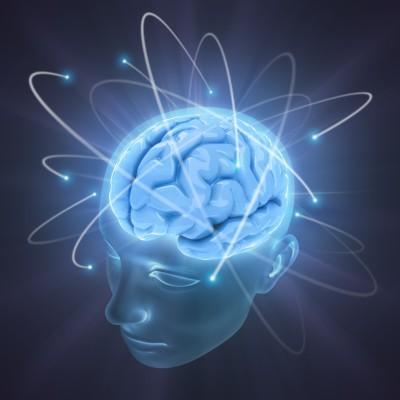- Updated on October 29, 2020
![]() By Dr. Artour Rakhimov, Alternative Health Educator and Author
By Dr. Artour Rakhimov, Alternative Health Educator and Author
- Medically Reviewed by Naziliya Rakhimova, MD
Ideal Breathing Pattern: 3 Breaths/Min for Maximum Body Oxygen
“…Methods of performing Pranayama: 12. In the beginning, there is perspiration, in the middle stage there is quivering, and in the last or third stage, one obtains steadiness; and then the breath should be made steady or motionless.”
Hatha Yoga Pradipika (the manuscript written in the 15th century; the foundation of Hatha Yoga)
There are many thousands of modern articles, books, and internet web pages written about breathing. Many of them talk about the benefits of ideal breathing for various systems of the human body and to cure numerous diseases. However, authors of most articles virtually never give exact parameters of the ideal breathing pattern. They can mention something about deep “cleansing” breathing and discuss the poisonous and toxic nature of carbon dioxide. You can find the exact graph of the ideal breathing pattern below. This pattern can be measured, if you have one, using a simple DIY body-oxygen test (or the CP test).
 What makes the human body most resistant to pathological organisms and diseases? How should we breathe days and nights for superior abilities in relation to sleep; digestion; physical fitness; survival without sleep, food and water for days; healing of wounds and broken bones; and some lost and unique skills which were generously granted to humans by Nature?
What makes the human body most resistant to pathological organisms and diseases? How should we breathe days and nights for superior abilities in relation to sleep; digestion; physical fitness; survival without sleep, food and water for days; healing of wounds and broken bones; and some lost and unique skills which were generously granted to humans by Nature?
On previous web pages, we considered the exact parameters for the normal breathing pattern (for healthy people), ineffective breathing pattern (for the moderately sick people with chronic diseases), and the heavy breathing pattern (for the severely and critically sick). It is logical to suggest that the ideal breathing pattern will correspond to very slow breathing with very high body-oxygen levels due to very slow breathing with reduced minute ventilation at rest and 24/7.
|
In 1960-1980s Dr. Buteyko trained about 200 Soviet doctors to use the Buteyko ideal breathing pattern in their clinical practice. His main requirement for these breathing practitioners was 60 s CP or body oxygen level. Some of them had up to 2-3 min for this hard test. In addition, Dr. Buteyko taught the Buteyko breathing method to many hundreds of Russian patients, who got up to 1-3 minutes for their body oxygen level or CP. |
Dr. Buteyko’s finding was that the typical breathing rate at rest for people with 2-3 min CP (stress-free breath-holding time test done after usual exhalation) was about 3-5 breaths per minute with a minute volume of about 1.5-2.5 l/min. It corresponds to a slow and relaxed inhalation and very long automatic pause (period of no breathing) of 9-16 seconds. These results can be found in the Buteyko Table of Health Zones from the Homepage section. |
 Hence, the ideal breathing pattern, if we consider the clinical experience of about 200 Russian MDs and the Buteyko Table of Health Zones, corresponds to a 3 min CP and only 3 breaths/min at rest for an ideal breathing rate (for unconscious or automatic breathing).
Hence, the ideal breathing pattern, if we consider the clinical experience of about 200 Russian MDs and the Buteyko Table of Health Zones, corresponds to a 3 min CP and only 3 breaths/min at rest for an ideal breathing rate (for unconscious or automatic breathing).
Note that the maximum breath-holding time for the ideal breathing pattern will be over 7 minutes. Indeed, the Buteyko Table of Health Zones suggests the MP (maximum pause after usual exhalation) is 210 seconds or 3.5 min. Hence, after maximum inhalation, this result will be about 2-2.5 times greater. Practical testing found that such people usually have about 7-8 min for their maximum breath holding time.
Ideal breathing pattern chart

Fig. The ideal breathing pattern at rest is 3 breaths/min, 1.5-2 L/min for minute ventilation, and 180 s for the stress-free breath holding time test (optimum or ideal body oxygenation). The inhalation is about 1.5 s, exhalation 2.5 s, and the automatic pause (natural pause of relaxation with no breathing) is up to 16 s.
 The same ideal breathing rate (3 breaths/min) has been observed in hatha yoga masters.
The same ideal breathing rate (3 breaths/min) has been observed in hatha yoga masters.
According to numerous testimonials, various physiological and psychological changes take place during this super slow or ideal breathing pattern. As we discussed before, this extra healthy state restores certain biochemical processes, which were normal for humans in the past.
Benefits From ideal breathing Pattern
 Sleep becomes much shorter naturally. I witnessed this effect in dozens of my breathing students. With over 30 seconds for the body O2 test (when they reduce breathing almost to the medical norm), the usual duration of sleep is about 6-6.5 hours. They simply do not get any desire to sleep more, but often develop a healthy habit to have short (about 5-10 minutes) naps in the middle of the day.
Sleep becomes much shorter naturally. I witnessed this effect in dozens of my breathing students. With over 30 seconds for the body O2 test (when they reduce breathing almost to the medical norm), the usual duration of sleep is about 6-6.5 hours. They simply do not get any desire to sleep more, but often develop a healthy habit to have short (about 5-10 minutes) naps in the middle of the day.
With higher body O2 results (in seconds) and even slower breathing sleeping gets even shorter. You can find out exact numbers for people with about 1 min for the body O2 test and with 2-3 min as your bonus content in the next paragraph.
With 1 min morning CP, people sleep about 4 hours. Only 2 hours of sleep are enough for people who have a 3 minute CP.
[/sociallocker]
The human organism starts to produce antibodies in saliva that can suppress pathogens causing cavities and the formation of plaque. (Indeed, archaeological artifacts of human skulls show that some centuries ago humans had much fewer problems with dental plaque and cavities or caries. While some people claim that our diet is to blame, even with the ideal diet modern 20-25 s CP people in some months will still get a plaque and can get cavities too.)
While some people claim that our diet is to blame, even with the ideal diet modern 20-25 s CP people in some months will still get a plaque and can get cavities too.)
It becomes possible to digest wider varieties of fibers and other foods (roots, leaves, flowers, bones) and extract nutrients and energy from them.
Cuts, wounds and broken bones can get healed in a matter of days, instead of weeks or months.
Humans can survive for days without getting water, food, and sleep, while having their high CP and energy to search for water and food and fight, if necessary, for life.
 Pregnant females have painless childbirth. Child delivery becomes an easy and relaxing experience. [Those who suffer from pain due to constipation can check this effect of higher CO2 and CP by creating strong air hunger with long breath holds and reduced breathing.]
Pregnant females have painless childbirth. Child delivery becomes an easy and relaxing experience. [Those who suffer from pain due to constipation can check this effect of higher CO2 and CP by creating strong air hunger with long breath holds and reduced breathing.]
The superstate of the mind triggers extrasensory abilities (to feel the emotions of other people, see an aura around them, communicate thoughts without speech or have telepathic abilities, etc.). The perception of reality becomes more accurate and more detached from personal (egoistic) involvement.

